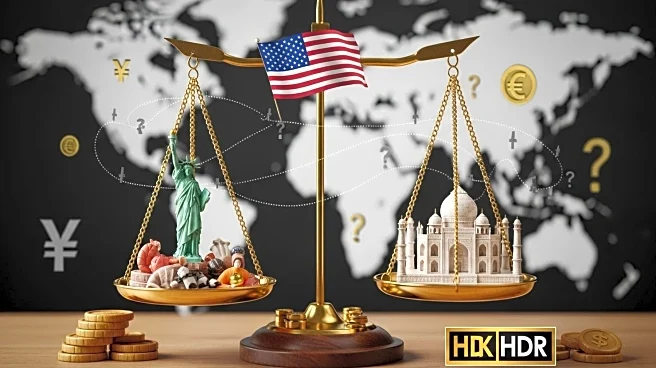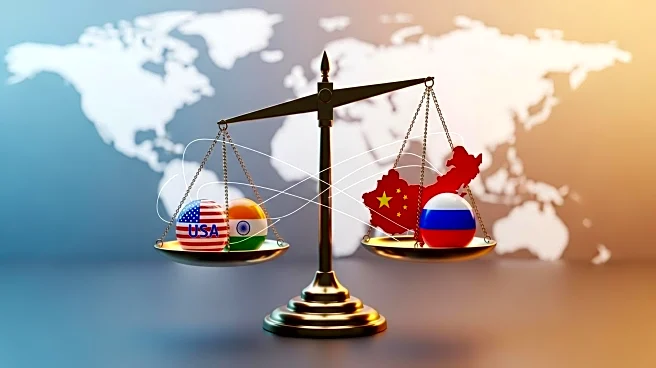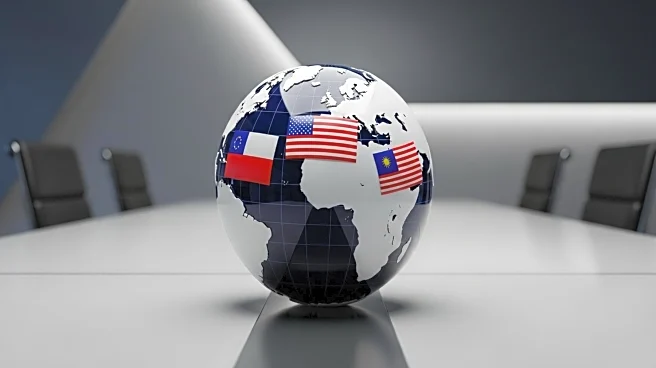What's Happening?
The Office of the United States Trade Representative, under President Trump's administration, has significantly increased tariffs on Indian goods, imposing a 50% tariff as of August 2025. This move is part of a broader strategy to pressure India over its energy purchases from Russia and its alignment with BRICS nations. The tariff escalation has exposed vulnerabilities in India's export-dependent sectors, particularly affecting labor-intensive industries such as textiles, gems and jewelry, and leather. These sectors now face a competitive disadvantage of 30-35% compared to countries like Vietnam and Bangladesh, with potential export declines of up to 70%. The tariffs threaten $48.2 billion in Indian exports and risk 400,000 jobs, potentially slowing economic growth. In response, India is implementing fiscal support measures, GST reforms, and strengthening trade ties with the UK through the India-UK Comprehensive Economic and Trade Agreement (CETA), aiming to double bilateral trade by 2030.
Why It's Important?
The tariff escalation by the U.S. has significant implications for both countries' economies and the global trade landscape. For India, the tariffs threaten major export sectors, risking substantial job losses and economic slowdown. This situation forces India to diversify its trade partnerships and reduce dependency on the U.S. market. For the U.S., the tariffs are part of a strategy to reorient global supply chains and exert geopolitical pressure. However, this approach could lead to increased costs for American consumers and businesses relying on Indian imports. The broader impact includes potential shifts in emerging market equities and commodities, as investors navigate the volatility caused by these trade tensions. Countries like Vietnam and Mexico may benefit from trade diversion, presenting alternative investment opportunities.
What's Next?
India's strategic response involves balancing its trade relations with the U.S. while securing energy ties with Russia and managing its complex relationship with China. The success of India's diversification efforts will be crucial in maintaining its economic stability and growth. Meanwhile, the U.S. may continue to leverage trade policies to influence global supply chains and geopolitical alignments. Investors will need to prioritize sectoral diversification and geopolitical agility to mitigate risks associated with these trade tensions. The ongoing developments will likely influence global market dynamics and investment strategies in the coming years.
Beyond the Headlines
The tariff escalation highlights the intricate interplay between trade policies and geopolitical strategies. It underscores the challenges countries face in maintaining strategic autonomy while navigating global partnerships. The situation also raises questions about the long-term sustainability of using tariffs as a tool for geopolitical leverage, as it can lead to unintended economic consequences and strained diplomatic relations.












